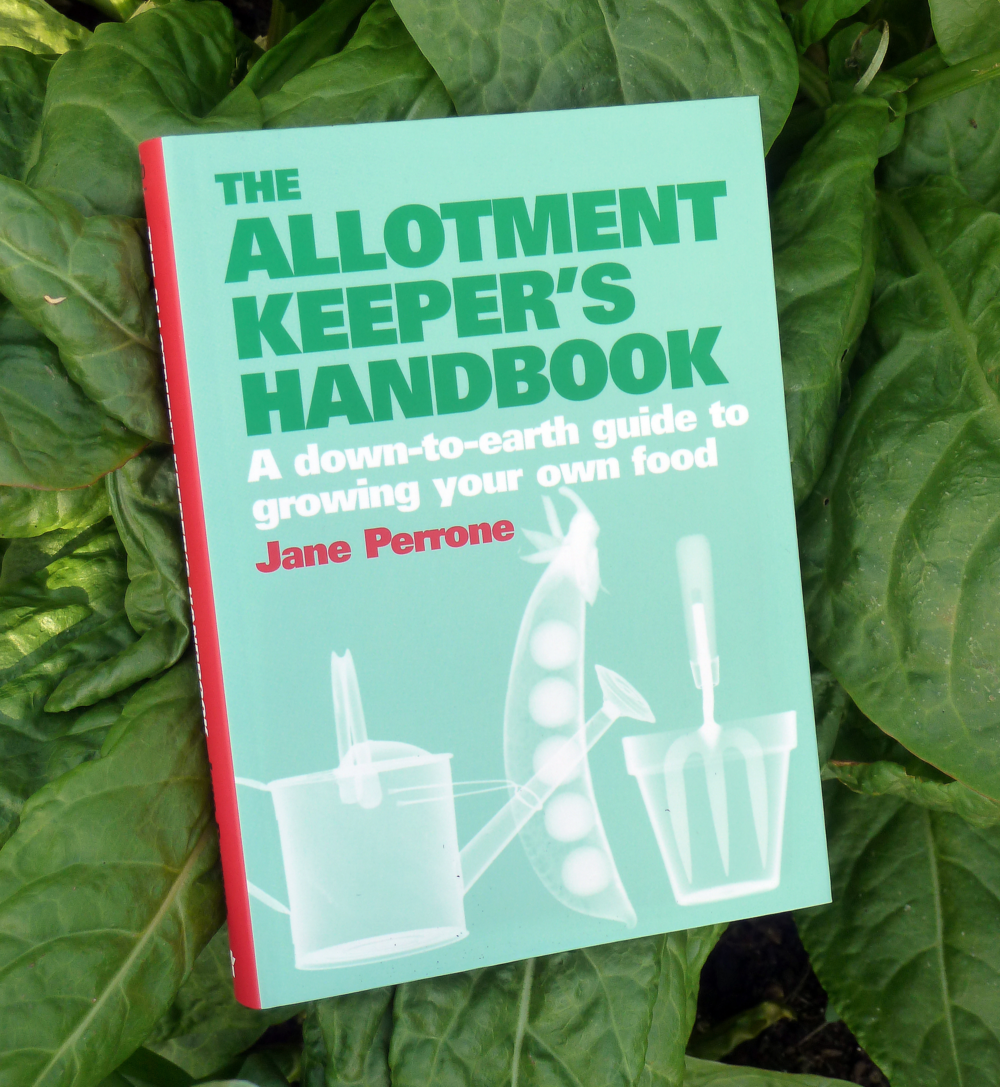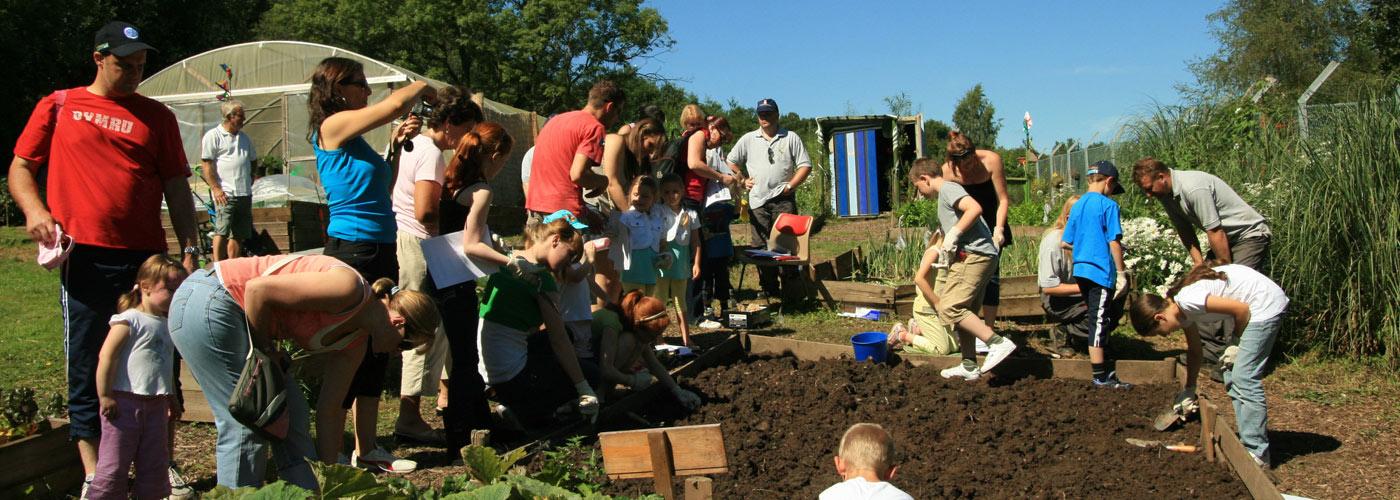The Allotment Movement
By Jane Perrone •
Ten years ago, I wrote a book called The Allotment Keeper’s Handbook. Its publication, fortuitously for me, collided with the moment when allotments in the UK began their rise in popularity.
I spotted the striking green and red cover on my bookshelf recently while looking for a book on some other aspect of horticulture, and picked it up on a whim, flicking through the chapters on tools, composting and sowing seeds with some nostalgia - I gave up my allotment a year after the book was published, when I moved to a house with an 80ft garden that needed taming.
It was heartening to note that when it came to the nitty gritty of growing stuff, very little had changed. I’ve probably got a bit less relaxed about my compost mix: I vowed in the book that “life’s too short to spend cutting up pumpkin leaves”, but I’ve learned over the years that it is worth chopping up everything that goes onto the heap; it speeds up the process no end and lets me make compost more quickly and efficiently.
- When it comes to the culture around allotments in the UK, however, it’s a different story. In a decade, the grow your own movement has seen a huge spike in popularity, leading to a bulge in waiting lists, TV programmes such as the BBC’s Big Allotment Challenge and a shelf’s worth of other books about allotments joining my own tome. It’s hard to obtain reliable data on the numbers of people waiting for allotments nationally, but the most recent research I could find, conducted by the National Allotment Society (NAS) in 2013, showed an average of 52 people waiting for a plot for every 100 plots. Back in 1996, the NAS found the figure was just 4 people waiting per 100 plots.
At the same time, allotments are under more pressure than ever from developers desperate for building land. Even so-called “statutory” allotments - sites protected under government law - have been lost. Plot holders at Farm Terrace allotments in Watford, Hertfordshire took their battle to save their site from being used for housing all the way to the high court but lost in November 2016.
I was sure a lot more had changed, but as I’d not tended my own allotment for a number of years, I decided to ask those still at the sharp end of the trowel. A Facebook group called Allotment Life has 26,000 members and growing, so I when I asked them for their thoughts on how allotments have changed in the last decade, it was fascinating to see their responses.
On the positive side, their main observations centred around allotments becoming a far more inclusive place in the past decade: more women, younger people, children and LBGT people now feel more welcome on many allotment sites. Shropshire allotment holder Sally Lill said: “In my 10 years of experience, my allotment committee is definitely demonstrating wider equality and diversity. I think there is more interest in exotic veg and fruit… In general, the sense of community on our site has grown stronger and more inclusive.”
Charlotte Grobler said she and her wife are the first lesbians they know of on their site, while Linda Holt commented: “I’m known as the lady with a wife on our allotment! My wife came up a couple of weeks ago and it was surprising how many old chaps stopped to say hello, asked if she was my missus and how was she enjoying helping me? So funny!”
And the downsides? Rising rents and increased fear of vandalism and theft were high on the list. Some plot holders also felt that the “make do and mend” mentality of allotments had been lost as growers spend more money on expensive sheds and so on rather than recycling their own. Lynne Gunns commented: “People seem to personalise their allotments more now with bunting and signs and painting the shed pretty colours. Make do and mend ethos is not such a must these days either. People are growing for enjoyment, relaxation and taste and not to save money these days regardless of cost and work.”
Surprisingly, few members of the Allotment Life Facebook group mentioned threats to allotment land itself, but this was foremost in the mind of a former colleague and friend of mine, Lia Leendertz, who wrote a book The Half-Hour Allotment that came out a year before my own book. “I think it all feels a lot less secure than it once did… I know that cuts in council budgets mean that many councils are scouting around for assets to cash in, and that leaves allotments very vulnerable. Finances are so cut to the bone that it seems almost inevitable that more will be sold, and with the high profile case of Farm Terrace ending so badly the protections feel flimsy.”
On the other hand, she noted, interest in allotments and the GYO movement is still high, which is a good sign: well-maintained plots and bulging waiting lists discourage developers seeking underused land to snap up.
Chelsea award winning garden designer Cleve West pointed out another impact of austerity on allotments: budget cuts mean council are keen to hand over site management duties to the plot holders themselves, worked in a voluntary capacity. West shares an allotment with his partner Christine, and wrote about it in a book called Our Plot, published in 2011. “They are looking at ways to cut corners and ease their workload. We have resisted it so far because we’ve got 380 plots on our site so it’s a big task for someone to take on,” he said. For some sites, however, self-management has been a saviour - read plot holder James Robbins’ blogpost about how taking control into their own hands saved his site in North London for another perspective.
Journalist Sean James Cameron has had an allotment since 2007, and has been writing about and filming on his plot ever since. He believes the allotment “bubble” burst about four years ago, and in most parts of the country anyone who is persistent enough should be able to secure a plot without too long a wait: from talking to plot holders in different parts of the UK, I can see what he means. It will be interesting to see if figures come forth to back those anecdotes up, but in the meantime in my view, it’s not so much that the bubble has burst - more that there’s an acceptance that there are other, equally valid models for community gardens that are worth pursuing. Professional horticulturist Sara Venn, project lead at Incredible Edible Bristol, says the average age of the volunteers who help to plant 30 edible gardens in parks, street corners and station platforms around the city is 28. Young people are taking on allotments, but many are also finding alternative ways of getting growing.
Community garden schemes are springing up around the UK and beyond, recognising that the traditional “10-pole plot” setup of the allotment isn’t the right model for everyone. There are myriad examples, but here are just three. In my own town, there’s a community herb garden situated on a roundabout, it’s maintained by local residents, and anyone can come and harvest the herbs. When I was working at the Guardian I loved visiting the Global Generation Skip Garden, a portable garden based round the corner from my office in Kings Cross - plants are grown in builders’ skips, allowing the garden to hopscotch from site to site as the regeneration work of this part of London continues. And last week I met a man guerrilla gardening a patch of land on a roadside verge in Northamptonshire, turning it into an edible food forest for both people and wildlife.
The allotment movement is embracing change, too: many sites have made basic improvements in the last decade such as offering smaller plots and raised beds for newcomers and plots set aside for particular groups such as refugees and asylum seekers. There’s also more radical change on the horizon, such as universities setting aside land for students to grow food, and wood allotments where people can grow and harvest their own firewood. “The fundamental thing that’s changing with allotments is the days of it being all about self sufficiency are long gone,” Cameron tells me. “People now want an allotment to educate their children about where food comes from.” Allotments will continue wax and wane in popularity, but over the long term they’ve proved to be capable of adapting to the needs of each new generation. It will be fascinating to see how they evolve in the coming decade.
Stay updated
Receive free updates by email including special offers and new courses.





